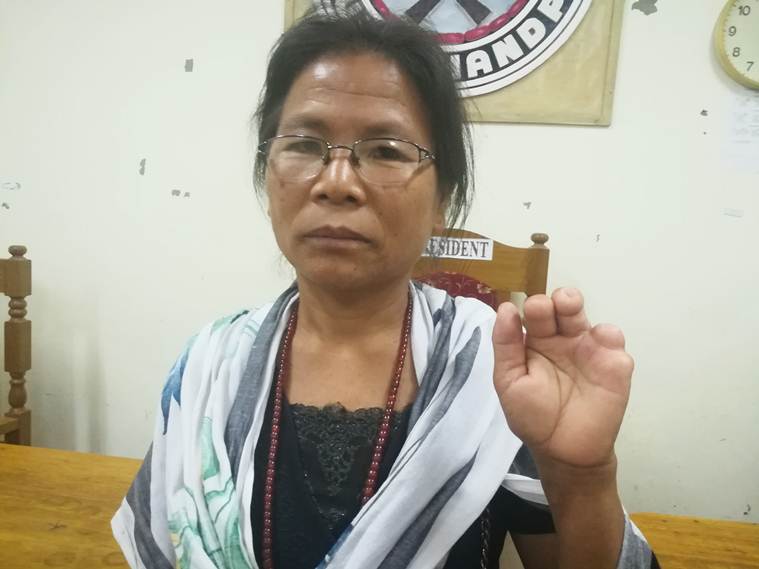Lamkhohao Singsit went to his village in Janglenphai (Senapat district), Manipur, in November 1993, not a single house remained. Two months ago, cadres of the National Socialist Council of Nagaland (Isak-Muivah) had, allegedly, carried out a series of attacks on Kuki villages in the West Manipur hills. “Only the church was spared but all the furniture was gone,” says Lamkhohao. That was the last time he ever visited his homeland.
On September 12, 1993, 23-year-old-Lamkhohao tearfully bid adieu to his fatherland, along with his entire village, after they were served “quit” notices by NSCN (IM) militants to vacate by September 15. On receiving a similar notice, the residents of Joupi village joined them in this forced migration.
Lamkhohao and the others were headed towards Tamei in Tamenglong district for safety, as it used to be a major trade hub for various communities. But, just as they started moving out, an army of cadres ambushed them, butchering at least a hundred people on that day alone. “My family got split up after the attack. While hiding with my sister-in-law, a cadre spotted us, but on closer look, he turned out to be an old friend. He helped us escape”, says Lamkhohao. His younger brother wasn’t as lucky. “Another survivor from my village saw him being beheaded.”
Ever since then, for 25 years, Kuki tribes spread across the Northeast have observed September 13, as Kuki Black Day or “Sanhit Ni” every year — a day of peaceful mourning by hundreds of refugees who lost family, property and land that they can no longer imagine returning to. However, this year, the Kuki Inpi (apex body of all the tribes) along with the militant outfit, Kuki National Organisation, commemorated what they say was a genocide, in a massive three-day affair held in Kuki-dominated Churachandpur town. For the first time also, this year, seven survivors from across the state shared their story of trauma in front of one of the largest congregations of the community.
A former resident of Khalong village in erstwhile Senapati district (now in Kangpokpi), Veikhonem Lhungdim, 55, says, “The cries of my daughter, mother and aunt while I was tied up and kept in a different hut that night have never left me. Or, that Thadou song one of the cadres kept humming while they were being slaughtered.”
Only six people survived from her village when, what she estimates to be, 40 armed cadres, raided them on August 7, 1993. That night she lost all her family and barely managed to survive after the Tangkhul cadres brutally hacked her in several places and chopped four fingers of her left hand.
Tingneikim Hangshing, 50, still vividly remembers January 18, 1994, when she was out collecting I-thanglo (a locally grown vegetable) in the jhum field nearby her village in Jangnoi (Senapati district) with her sister, Hatneilhing. Before they realised, NSCN-IM cadres had surrounded them and lined up all the eight women in the field. “They tied our hands and shot us one by one. Three bullets pierced my abdomen, chest and thigh, but I survived. The rest including my sister, died on the spot”, she says.
 Tangkhul cadres brutally hacked Veikhonem Lhungdim, 55, in several places and chopped four fingers of her left hand. (Photo: Makepeace Sitlhou)
Tangkhul cadres brutally hacked Veikhonem Lhungdim, 55, in several places and chopped four fingers of her left hand. (Photo: Makepeace Sitlhou)
A human rights front of the Kuki Inpi, the Kuki Organisation for Human Rights (KOHUR) was the first to document the scale of the killings and destruction in 1995, when they published a list of the 613 people killed and 178 villages burned down. Many of these names, and hundreds more, have now found a place in the memorial stones inaugurated this month in front of the Kuki Inpi Churachandpur office in Tuibuong village.
However, KOHUR has barely been able to put together much momentum on raising international awareness or advocacy. The general secretary, Dr Satkai Chongloi, says, “We were not as well exposed to the outside world when the massacre happened, which is why we haven’t been able to make a case for ourselves. But the ultimate proof of our allegations lies in the mass graves that you will find even today.”






